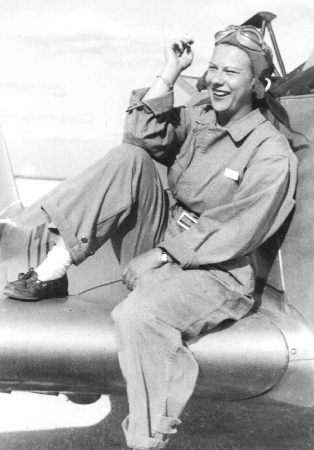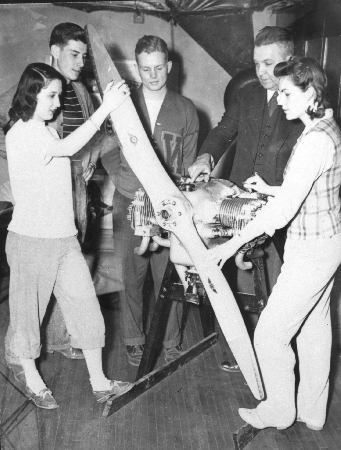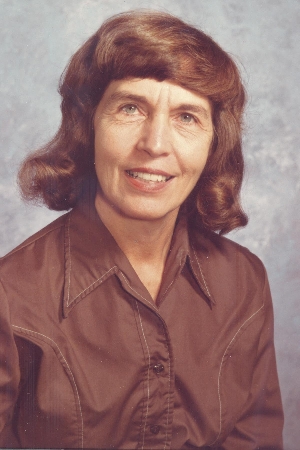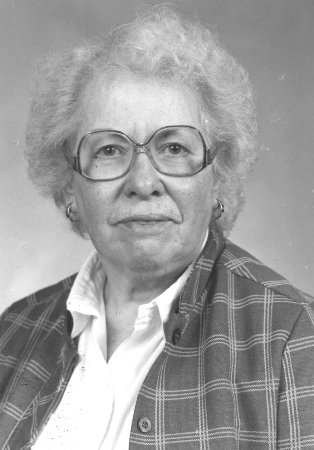University News
Western Women in War
May 18, 2017
*From the Spring 2017 Western Magazine for alumni: http://bit.ly/2qSc7oN
During World War II, some 350,000 women served in the U.S. Armed Forces. At Western Illinois University, several female members of the faculty and staff had illustrious military backgrounds. While this story cannot focus on each woman who was a part of the armed forces during WWII, WIU proudly salutes the women of Western who have served, and are serving, our great nation.
According to WIU English Professor Emeritus John Hallwas' '67 MA'68 book, "First Century: A Pictorial History of Western Illinois University," on May 28, 1943, Western's service flags for WWII were dedicated, and at that time they had 445 stars ... by Spring 1944 that figure had reached 572, including some three dozen women who served in the WACs, WAVEs, WASPS, Marines and Army Nurse Corps.
WASP Harriet (Knappenberger) Wanamaker Fisher '40 MA '59, WIU alumna and Logan School (Macomb) teacher (1919-2005) *
Fisher's first airplane ride was in 1930 with her uncle. Years later, she became a certified pilot and participated in the Women's Air Force Service Pilot (WASP) program during WWII. She was teaching school in Beardstown following her graduation from Western when the government came to the local airport for a civilian airline training scholarship. Five scholarships were awarded—one had to go to a female—and Fisher was that female recipient. She was then invited by Jaqueline Cochran (a pioneering 20th-century pilot who advocated for female aviators during WWII and was the first woman to break the sound barrier) to fly for the Air Force in WWII.
After passing all the physical standards, Fisher was sent to Texas in 1943 for cadet primary, basic and advanced ground and flight training. After passing, she received her Silver Wings. Fisher was a ferry pilot for planes and personnel from Love Field in Dallas. In October 1943, she was sent to glider school in Lubbock, and her job was then to tow future pilots who were training to fly gliders carrying 10 men and a jeep.
According to Fisher, about 25,000 females applied for the WASP program, and only 1,830 were accepted. From that number, 1,097 completed the training.
When WWII was over, so were her flying days. In 1944, she married George Wanamaker, her advanced flight instructor, and returned to Macomb where she taught second grade at Logan School for 26 years. Fisher also earned her master's degree from Western. Following George's death in 1971, she later married Stan Fisher '40. She remained a lifelong member of the Military Pilots Association.
"We were the pioneers of aviation. We were the first women ever accepted into the military on the same basis of men. Now women are eligible to be appointed to the Air Force Academy and it's all because of us—the WASPs."
WAC Ann Lamb (1924-2008), professor and physical education department chair
Lamb served in the Women's Army Corps (WAC) in 1943-44 in flight operations before earning her bachelor's and master's degrees in physical education from Utah State University.
She came to Western in 1966 as an associate professor in women's physical education (WPE).
Lamb was acting chair of the department in 1967-68, and she served as chair of department from 1968-81. She also served as acting dean of the School of Health, Physical Education and Recreation in 1970-72, while keeping her WPE administrative duties. During her early tenure (1971), old Brophy Hall (Morgan gymnasium) burned down and the present Brophy Hall was constructed.
Lamb was largely responsible for organizing women's intercollegiate athletics at Western and for appointing the first women's athletic director. Also, as chair and as a faculty member, she initiated numerous curricular changes in the undergraduate and graduate physical education programs.
Sgt. First Class Lois Mills, associate professor, Government Publications & Legal Reference librarian (1917-2000)
Mills was a member of the Women Army Corps (WAC) and served in the U.S. Army from 1944-49 working in cryptography. According to a story in the then-Macomb Journal, as a WAC, Mills actually followed the troops during the D-Day invasion of Normandy on June 6, 1944.
Mills began her WIU career as the librarian for the Lab School in 1954 and transferred to the campus library in 1968. She served as head of government publications and the legal reference section and was active in faculty governance until her retirement in 1987. Mills was the first woman to be named WIU Faculty Lecturer (1979). Prior to her tenure at WIU, she taught at Miles Consolidated School in Iowa from 1939-42 and Waterford Township Schools in Michigan from 1942 until she joined the armed forces in 1944.
On April 17, 2002, Mills was interred in Arlington National Cemetery.
Officer Beth (Lenora) Mackey Stiffler, English chair and professor emeritus (1921-2015) **
After her 1943 graduation from Illinois Wesleyan University, Stiffler worked for a short time as an insurance investigator in St. Louis, MO, but as she has explained, she enlisted in the U.S. Navy WAVEs "because a close cousin was in the boiler-room of the Arizona when the planes hit. My pilot cousin was missing in the Pacific. My brother was missing in the Atlantic. And I was in a good job in St. Louis, and thought I could make a difference."
After completing officers' training, she was sent to live at Radcliffe College and study at Harvard College, and later at Smith College, and was then commissioned in the Supply Corps and stationed at Bainbridge Naval Training Center, Maryland. There she met her future husband, Lt. Harold S. Stiffler. The two were married in April 1945, and he left several days later for an overseas assignment.
She was transferred to the Naval Mine Warfare School in Yorktown, VA, as a Supply and Disbursing officer. There, she was responsible for large sums of money that were ordered from Washington each week and sent to a small bank in Yorktown. She delighted in telling stories like this one:
"To get the money, I traveled by station wagon with an armed Marine on each front fender, one in the front seat and another in the rear beside me. I was also armed. As soon as we entered the bank, all customers fled. I went to the safe where the little banker nervously counted out my money and was glad to see me on my way."
She began her education career in 1957 teaching second grade at the WIU Laboratory School. Several years later, she joined the English department, and taught junior high and high school English and journalism. At the lab school's closing, Stiffler joined the WIU English department in 1973, and eventually rose to the position of department chair in 1982. Stiffler was a founding member of the McDonough County League of Women Voters, a group in that day characterized by some as a "wild-eyed organization of radical women." Stiffler retired from Western in 1987.
* From Macomb Journal story by Darcie Dyer.
** From ON COMMUNITY: Social Commitment and One of the Last WWII WAVES by John Hallwas.
Posted By: University Communications (U-Communications@wiu.edu)
Office of University Communications & Marketing





Connect with us: